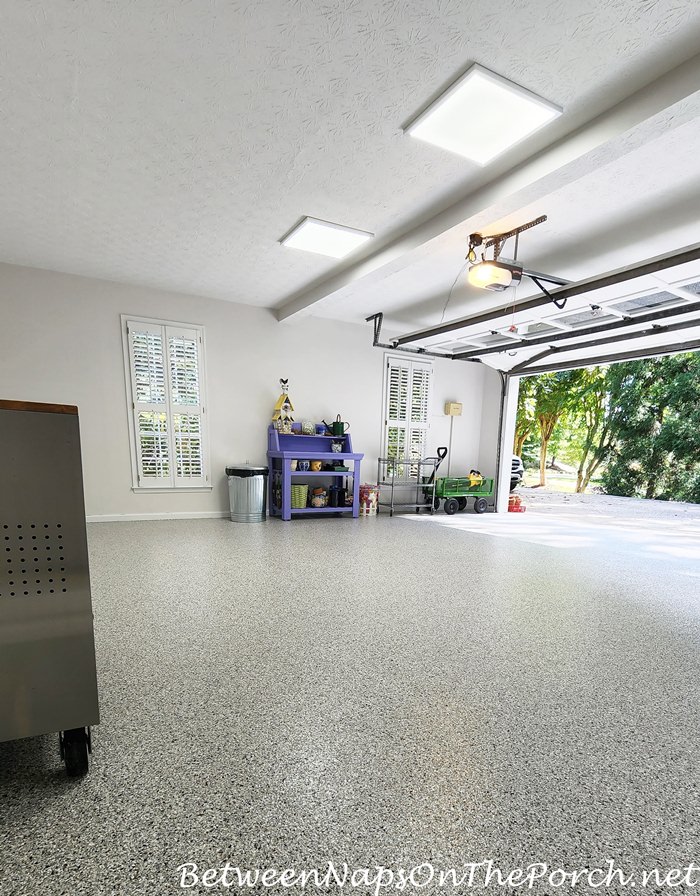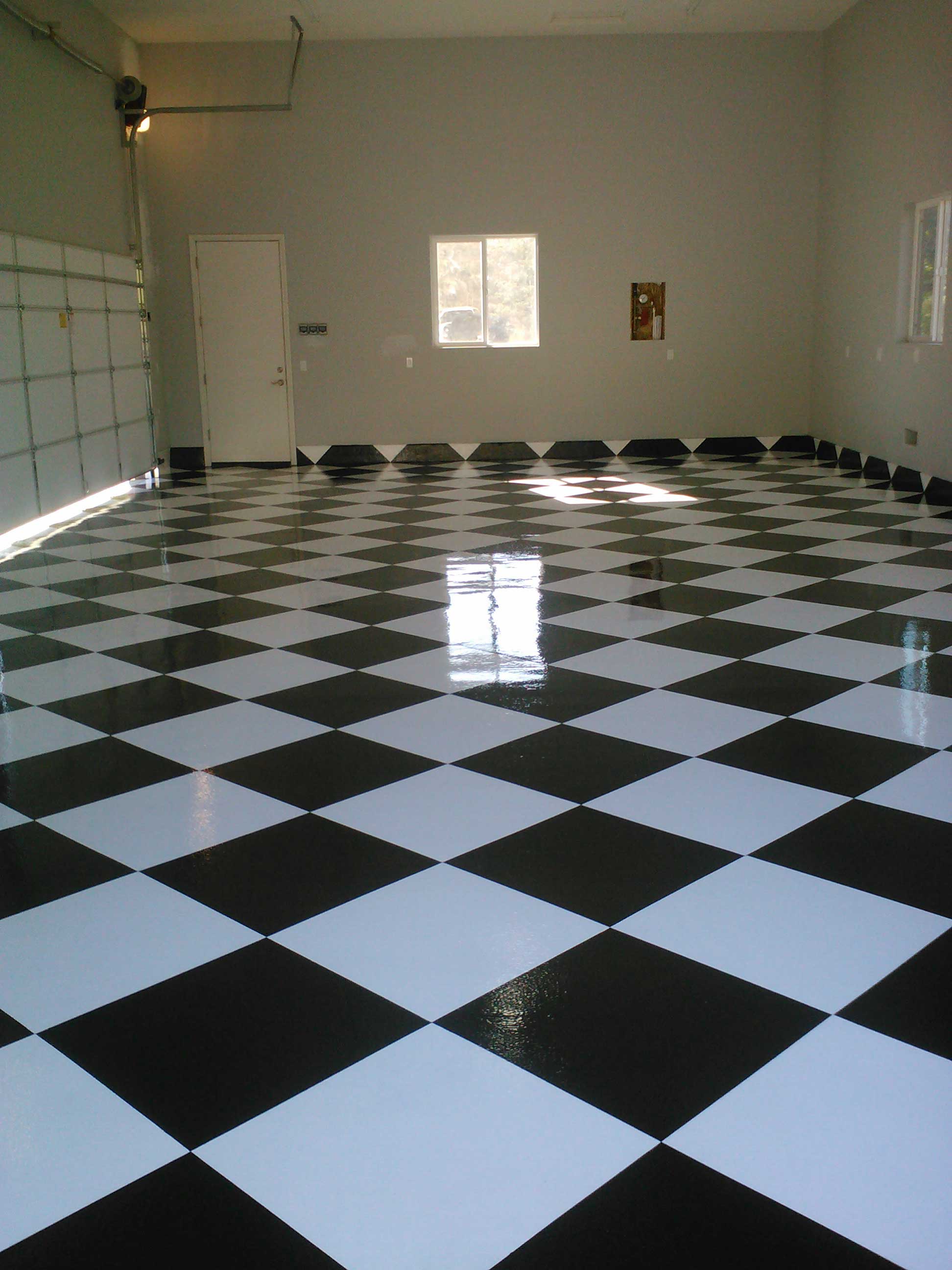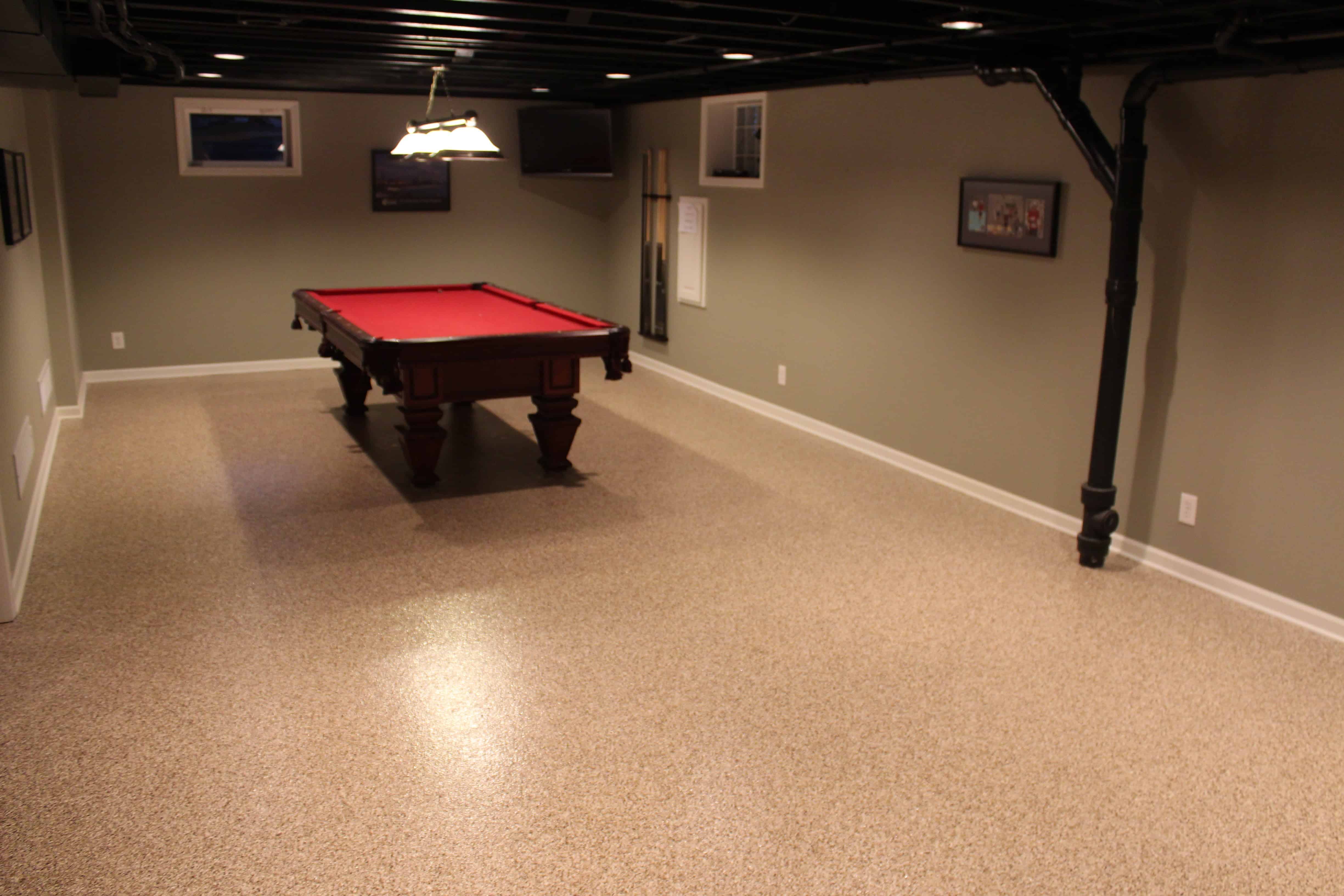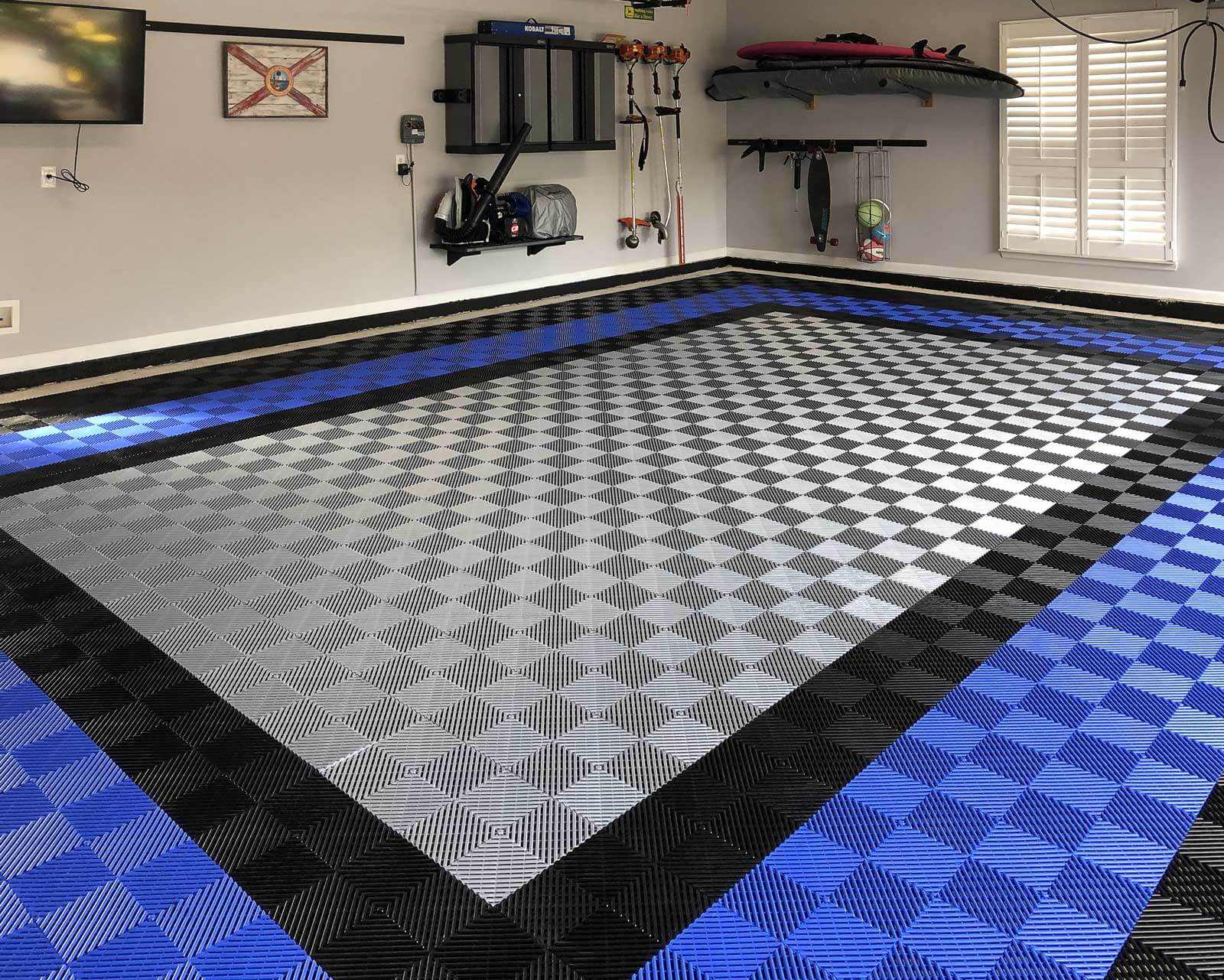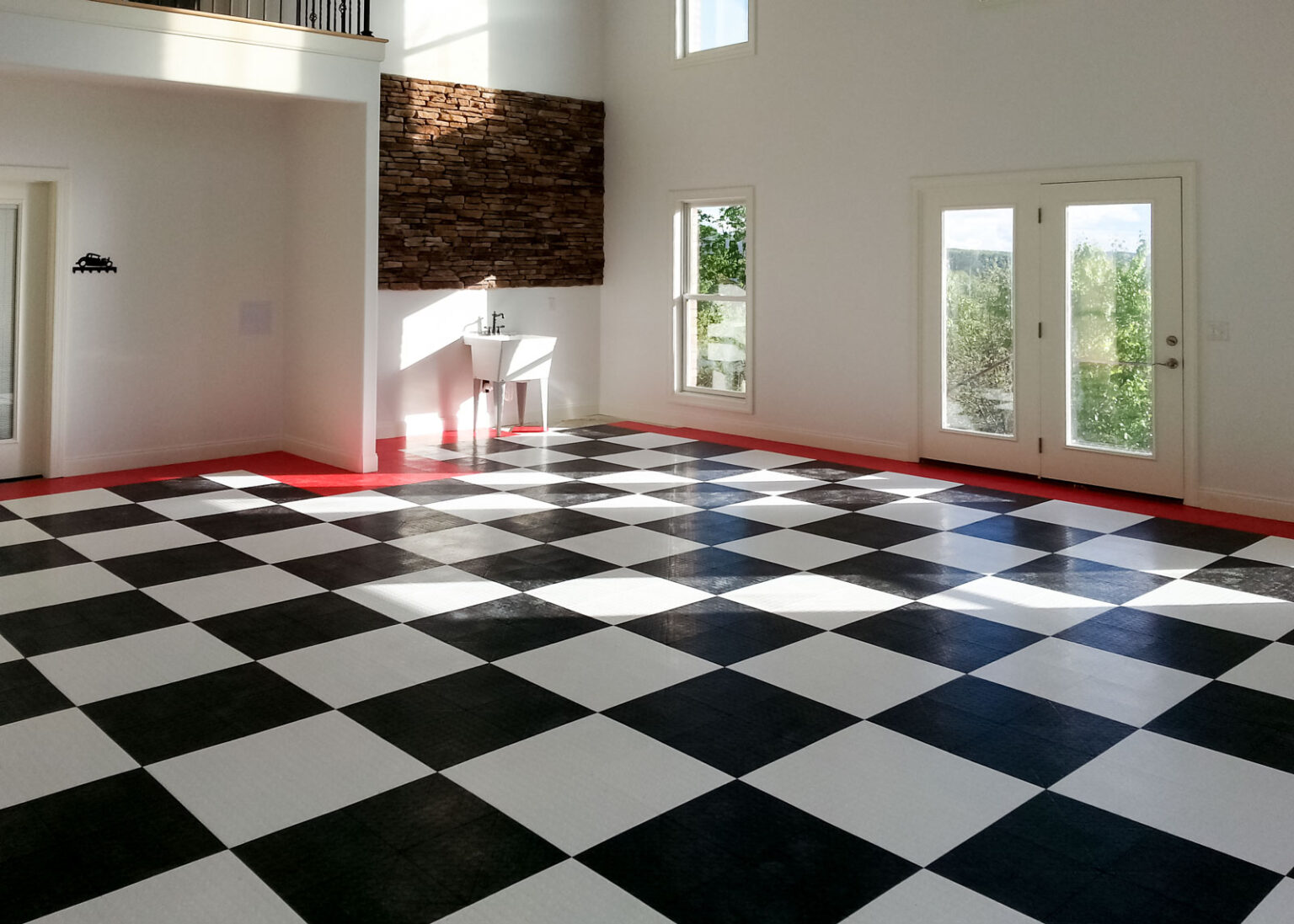The garage has evolved from a purely functional space into a versatile area that can serve multiple purposes. Whether it’s used for parking vehicles, as a workshop, or even as an extension of the living space, the flooring of a garage plays a crucial role in its functionality and aesthetics. With numerous flooring options available, choosing the right one can significantly enhance the durability, safety, and appearance of the garage.
Types of Garage Flooring
Epoxy Flooring
Epoxy flooring is one of the most popular choices for garages due to its durability and aesthetic appeal. This type of flooring involves applying a resin-based coating over a concrete surface, creating a hard, glossy finish. Epoxy is resistant to stains, chemicals, and abrasion, making it ideal for high-traffic areas. It also comes in various colors and patterns, allowing for customization to match the garage’s overall look. The application process, while straightforward, requires proper surface preparation to ensure the coating adheres correctly and lasts for many years.
Garage Floor Tiles
Garage floor tiles are another versatile option that offers both functionality and style. Available in materials like PVC, rubber, and polypropylene, these tiles are designed to withstand heavy loads and resist chemicals and stains. They come in interlocking designs, making installation easy and eliminating the need for adhesives. Garage floor tiles also provide a cushioned surface, which can be beneficial for workshops where prolonged standing is common. The variety of colors and patterns allows homeowners to create customized designs that enhance the garage’s visual appeal.
Concrete Stains and Sealers
For those who prefer a more straightforward and economical option, concrete stains and sealers offer a practical solution. Staining concrete floors involves applying a chemical solution that reacts with the concrete to produce a rich, translucent color. Sealers, on the other hand, provide a protective layer that enhances the concrete’s durability and resistance to stains. This option preserves the natural look of concrete while adding a layer of protection and aesthetics. It’s essential to choose the right type of stain and sealer to ensure compatibility and longevity.
Vinyl Flooring
Vinyl flooring has gained popularity in recent years due to its durability, ease of maintenance, and aesthetic versatility. Vinyl sheets or tiles can be installed over existing concrete floors, providing a water-resistant and stain-resistant surface. They come in various designs, including options that mimic the appearance of wood or stone, allowing for a high-end look at a lower cost. Vinyl flooring is also softer underfoot compared to concrete, which can make the garage more comfortable to use for extended periods.
Rubber Flooring
Rubber flooring is an excellent choice for garages that are used as gyms or workshops. This type of flooring provides a cushioned, non-slip surface that is comfortable to walk and stand on. Rubber flooring is also resistant to impacts, making it ideal for environments where heavy tools or equipment might be dropped. Additionally, it offers sound insulation, which can be beneficial in reducing noise levels in a busy garage. Rubber tiles or rolls are available in various thicknesses and colors, allowing for customization to suit specific needs.
Polished Concrete
Polished concrete is a sleek and modern flooring option that offers both durability and low maintenance. The process involves mechanically grinding and polishing the concrete surface to achieve a smooth, glossy finish. Polished concrete is highly resistant to stains and abrasion, making it suitable for high-traffic areas. It also reflects light, which can brighten up the garage and reduce the need for additional lighting. This option is ideal for those who prefer a minimalist, industrial look with long-lasting performance.

Benefits of Upgrading Garage Flooring
Upgrading garage flooring goes beyond mere aesthetics. It enhances the functionality, safety, and value of the space. A well-chosen flooring option can make the garage easier to clean and maintain, reducing the time and effort required for upkeep. Improved flooring can also provide better traction and reduce the risk of slips and falls, enhancing overall safety.
Additionally, investing in quality garage flooring can increase the home’s resale value, as potential buyers often view the garage as an extension of the living space. A well-maintained and visually appealing garage can leave a positive impression and set the home apart in the real estate market.
Installation Process and Considerations
When installing new garage flooring, it’s crucial to consider several factors to ensure a successful and long-lasting result. Proper surface preparation is essential, as any existing cracks, stains, or uneven areas can affect the adhesion and appearance of the new flooring. It’s also important to choose the right type of flooring for the specific needs of the garage, taking into account factors such as load-bearing capacity, chemical resistance, and ease of maintenance.
The installation process may vary depending on the type of flooring chosen, with some options requiring professional installation while others can be done as a DIY project. Following manufacturer instructions and using the appropriate tools and materials are key to achieving a high-quality finish.
Maintenance Tips for Garage Flooring
Proper maintenance is essential to prolong the lifespan and appearance of garage flooring. Regular cleaning is crucial to prevent the buildup of dirt, debris, and chemicals that can cause damage over time. Depending on the type of flooring, specific cleaning methods and products may be recommended to avoid damage and maintain the surface’s integrity.
For example, epoxy floors can be cleaned with mild detergents and water, while rubber flooring may require special cleaners to prevent deterioration. It’s also important to promptly address any spills or stains to prevent them from setting in. Regular inspections and maintenance can help identify and address minor issues before they become major problems, ensuring the flooring remains in top condition for years to come.
Environmental Considerations
Choosing eco-friendly garage flooring options is becoming increasingly important as homeowners seek to reduce their environmental footprint. Sustainable materials such as recycled rubber, eco-friendly vinyl, and low-VOC epoxy coatings offer environmentally responsible choices without compromising on performance or aesthetics.
Additionally, some flooring options, like polished concrete, contribute to improved energy efficiency by reflecting more light and reducing the need for artificial lighting. Considering the environmental impact of flooring materials and opting for sustainable choices can contribute to a healthier and more eco-conscious home environment.
Common Mistakes to Avoid
Neglecting Surface Preparation: One of the most common mistakes is failing to properly prepare the concrete surface before applying new flooring. Any existing cracks, stains, or uneven areas should be addressed to ensure proper adhesion and a smooth finish.
Choosing the Wrong Flooring Type: Not all flooring options are suitable for every garage. It’s essential to consider the specific needs of the space, such as load-bearing capacity, chemical resistance, and ease of maintenance, to select the most appropriate flooring type.
Improper Installation: Incorrect installation can lead to premature wear and failure of the flooring. Following manufacturer instructions and using the right tools and materials are crucial for a successful installation.
Ignoring Maintenance Requirements: Every type of flooring has specific maintenance needs. Failing to follow recommended cleaning and upkeep practices can shorten the lifespan of the flooring and affect its appearance.
Overlooking Environmental Impact: Not considering the environmental impact of flooring materials can result in higher emissions of harmful chemicals. Opting for eco-friendly options can contribute to a healthier and more sustainable home.
Underestimating Budget and Time: Properly installing and maintaining garage flooring can require a significant investment of time and money. Planning accordingly and being realistic about the costs and effort involved can prevent unforeseen issues and ensure a successful project.
What is the best type of flooring for a garage used as a workshop?
The best type of flooring for a garage used as a workshop is typically epoxy or rubber flooring. Epoxy provides a hard, durable surface that is resistant to stains and chemicals, making it ideal for a workshop environment. Rubber flooring, on the other hand, offers a cushioned, non-slip surface that is comfortable to stand on for long periods and resistant to impacts from dropped tools and equipment. Both options provide excellent durability and ease of maintenance, making them suitable for workshop use.
Can I install garage flooring myself, or should I hire a professional?
Whether you can install garage flooring yourself or need to hire a professional depends on the type of flooring and your level of DIY experience. Interlocking garage floor tiles and vinyl sheets are generally easy to install and can be done as DIY projects. However, more complex options like epoxy coatings or polished concrete may require professional installation to ensure a high-quality finish and proper adhesion. If you are unsure about your ability to install the flooring correctly, it is advisable to hire a professional to avoid potential issues and ensure a long-lasting result.
How do I maintain my garage flooring to ensure it lasts?
Maintaining garage flooring involves regular cleaning and addressing any spills or stains promptly. For epoxy floors, use mild detergents and water for cleaning, and avoid harsh chemicals that can damage the surface. Rubber flooring may require special cleaners to prevent deterioration. Regular inspections can help identify and address minor issues before they become major problems. It’s also important to follow any specific maintenance guidelines provided by the flooring manufacturer to ensure the longevity and appearance of the flooring.
What are the benefits of eco-friendly garage flooring options?
Eco-friendly garage flooring options offer several benefits, including reduced environmental impact and improved indoor air quality. Sustainable materials like recycled rubber, eco-friendly vinyl, and low-VOC epoxy coatings minimize the release of harmful chemicals and reduce the demand for non-renewable resources. Additionally, some eco-friendly flooring options, like polished concrete, can enhance energy efficiency by reflecting more light and reducing the need for artificial lighting. Choosing environmentally responsible flooring options contributes to a healthier home and a more sustainable environment.
How do I choose the right color and design for my garage flooring?
Choosing the right color and design for your garage flooring depends on the intended use of the space and your personal preferences. For a workshop or gym, darker colors may be more practical as they can hide stains and dirt. If you want to create a bright, inviting space, lighter colors and reflective surfaces like polished concrete can enhance lighting. Consider the overall aesthetic of your home and how the garage fits into that design. Customization options, such as patterns and logos, can also add a personal touch and make the garage an extension of your living space.
What should I consider when planning a budget for garage flooring?
When planning a budget for garage flooring, consider the cost of materials, installation, and any necessary surface preparation. Some flooring options, like interlocking tiles, may be more affordable and easier to install, while others, like epoxy coatings or polished concrete, may require a larger investment. Factor in long-term maintenance costs and the expected lifespan of the flooring to get a comprehensive view of the total investment. It’s also wise to set aside a contingency budget for any unexpected issues that may arise during the installation process.
Best Garage Floors Ideas – Let’s Look at Your Options
Related Posts:
